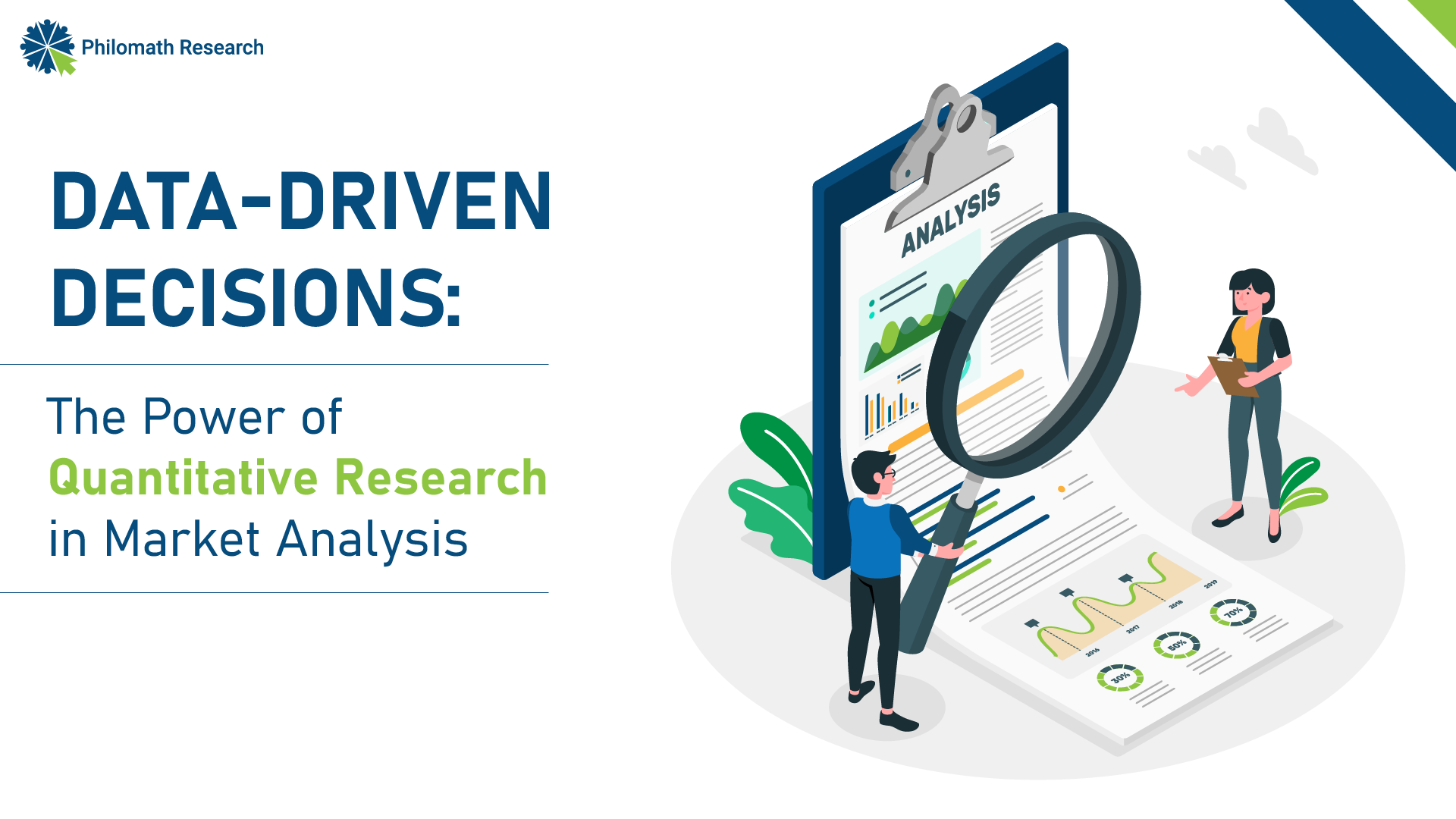21 Sep

|
Getting your Trinity Audio player ready...
|
In today’s dynamic business landscape, making informed decisions is crucial for the success of any organization. The era of relying solely on gut feelings and intuition has given way to a more structured and analytical approach – one that harnesses the power of quantitative research in market analysis.
Quantitative research involves the collection and analysis of numerical data to uncover patterns, trends, and insights. In this blog, we will explore the significance of quantitative research in market analysis, its key methodologies, and how organizations can leverage it for data-driven decision-making.
Table of Contents
The Significance of Quantitative Research in Market Analysis
Market analysis is the foundation upon which strategic business decisions are built. It involves understanding market trends, customer preferences, and competitor behavior. Quantitative research brings objectivity and precision to this process by providing measurable data that helps businesses gain a deeper understanding of their target markets. Here are some key reasons why quantitative research holds immense significance in market analysis:
- Data-Backed Insights: Quantitative research provides empirical evidence that helps in verifying hypotheses and making informed judgments. This data-driven approach reduces the risk of biases and assumptions, leading to more accurate insights.
- Trend Identification: By analyzing large datasets, quantitative research allows businesses to identify trends and patterns that might be missed through qualitative methods. These insights are valuable for predicting future market movements.
- Measurable Metrics: Quantitative research generates quantitative data, which can be expressed in numbers and metrics. This facilitates easy comparison, benchmarking, and tracking of key performance indicators.
- Statistical Validity: Rigorous statistical analysis applied in quantitative research ensures that the findings are statistically valid, enhancing the credibility of the insights.
Methodologies in Quantitative Research
Quantitative research employs various methodologies to gather and analyze data. Each methodology offers a unique approach to understanding market dynamics. Here are some commonly used methodologies:
- Surveys and Questionnaires: Surveys involve collecting data from a large number of respondents using structured questionnaires. This method is efficient for gathering insights about customer preferences, satisfaction levels, and demographics.
- Experiments: Experimental research involves manipulating variables to observe their impact on a specific outcome. In market analysis, experiments can help determine causation and test hypotheses.
- Observational Studies: Observational research involves systematically observing and recording behaviors or events without intervening. This method is useful for studying consumer behavior in natural settings.
- Secondary Data Analysis: Researchers analyze existing datasets, often collected by other organizations, to extract insights. This approach is cost-effective and time-efficient.
- Content Analysis: This method involves quantifying and analyzing the content of various forms of media, such as advertisements, social media posts, and news articles, to understand prevailing trends and sentiments.
Leveraging Quantitative Research for Data-Driven Decisions
- Defining Research Objectives: Clearly define the research objectives and questions you aim to address. This clarity will guide the choice of methodology and data collection process.
- Sampling: Selecting a representative sample of the target population is crucial to ensure the findings can be generalized to the larger group. Various sampling techniques, such as random sampling or stratified sampling, can be employed.
- Data Collection: Implement the chosen methodology to collect relevant data. Whether through surveys, experiments, or observations, ensure data collection processes are standardized to maintain consistency.
- Statistical Analysis: Employ appropriate statistical techniques to analyze the collected data. Descriptive statistics, regression analysis, and hypothesis testing are some commonly used methods.
- Interpreting Insights: Translate statistical findings into meaningful insights. Visualizations like graphs and charts can help convey complex information in an easily understandable manner.
- Drawing Conclusions: Based on the analysis, draw conclusions that address the research objectives. Determine the implications of these conclusions for business strategy.
- Decision Making: Use the derived insights to make informed decisions. Whether it’s launching a new product, adjusting pricing strategies, or targeting a specific demographic, let the data guide your choices.
Challenges and Considerations
While quantitative research offers numerous benefits, it’s important to be aware of potential challenges:
- Sample Bias: If the sample used in the research is not representative of the target population, the findings may lack validity.
- Data Quality: Inaccurate or incomplete data can lead to flawed conclusions. Ensure data is collected and recorded accurately.
- Ethical Concerns: Research involving human subjects requires ethical considerations, including informed consent and data privacy.
- Complexity: Statistical analysis can be complex, requiring expertise in data analysis tools and methodologies.
Conclusion
In the modern business landscape, making decisions without proper data analysis is akin to navigating uncharted waters blindly. Quantitative research equips organizations with the tools to navigate these waters with precision, enabling them to make informed and strategic decisions.
By leveraging methodologies such as surveys, experiments, and observational studies, businesses can uncover actionable insights that drive success. As technology continues to evolve, so does the potential of quantitative research, offering increasingly sophisticated ways to understand and shape the markets of tomorrow.
Embracing data-driven decision-making through quantitative research is not just a choice; it’s a strategic imperative for businesses looking to thrive in an increasingly competitive world. Visit – https://www.philomathresearch.com/


